Have you had trouble deciding whether to buy an air sprayer and an airless sprayer for your next painting project? There are so many models of each type available on the market, making it challenging to decide which one will serve you better.
But you aren’t alone in this. So, which one should you buy? We have found that the two types of sprayers are equally important and more complementary than competitive. However, we do not live in an ideal world, meaning that you may not buy both types.

We have found that one of these items is ideal for users looking for faster spraying speeds for larger projects, and the other is ideal for users looking for more finesse, precision, and control for smaller painting projects.
Let’s dive right in and discover this together!
TL;DR: Air vs Airless Sprayer
The table below shows some advantages and disadvantages of air sprayers and airless sprayers. We also make quick recommendations on the best uses or users for each type.

Air Paint Sprayer
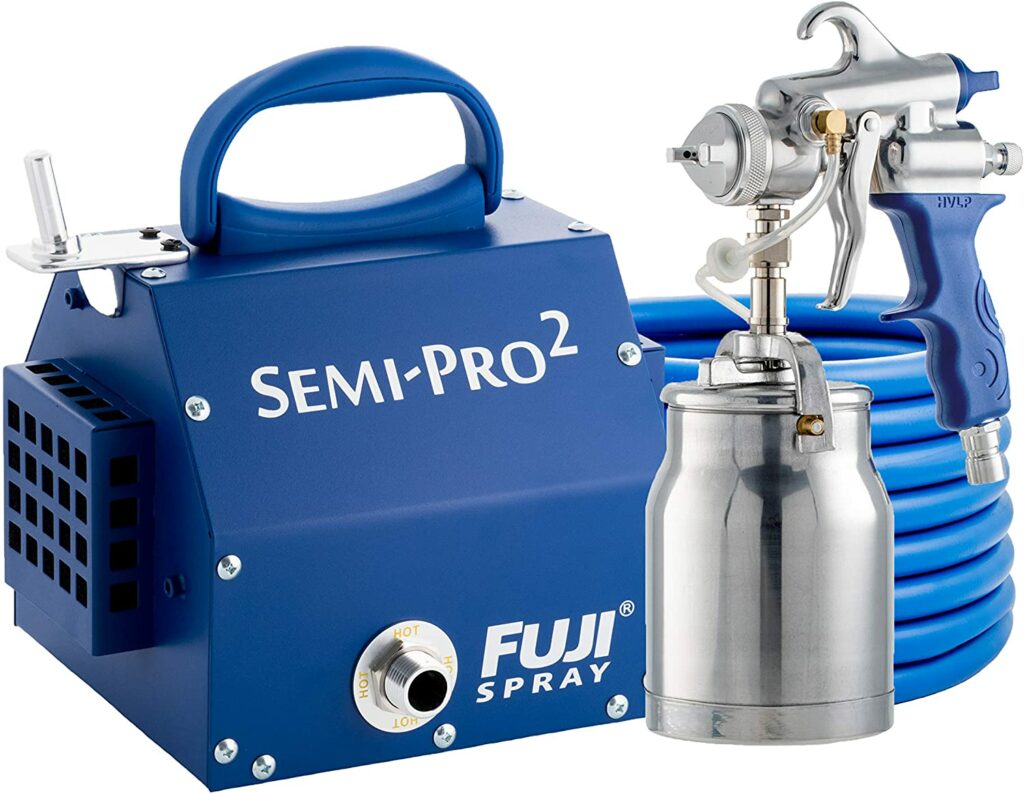
Airless Paint Sprayer
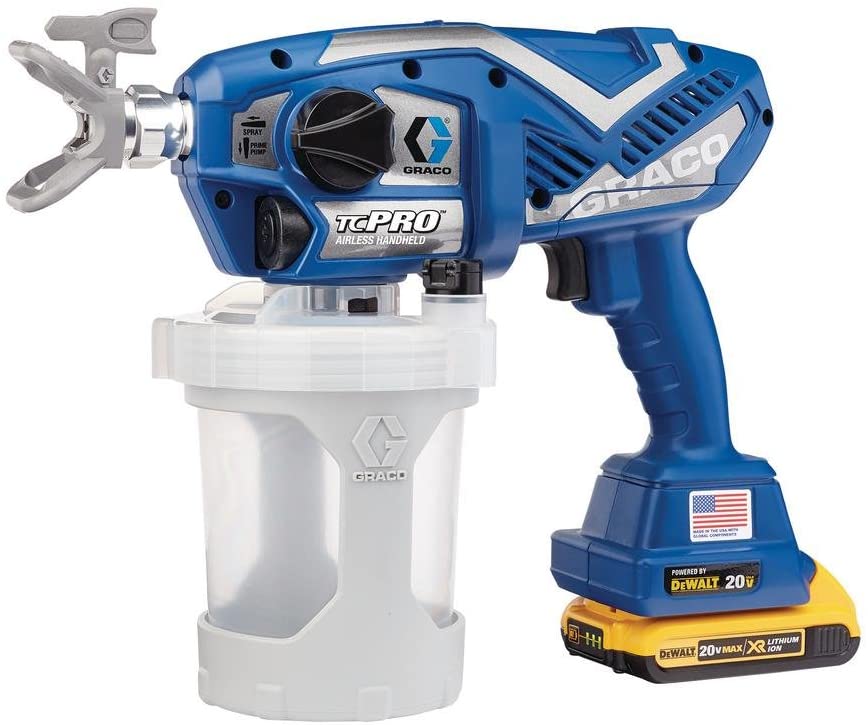
Pros
Air Paint Sprayer
More painting precision
Easier to use and maintain
Up to 90% transfer rate hence highly economical
Airless Paint Sprayer
Finer finish
Faster drying due to high temperature
High painting speed for faster completion of projects
Cons
Air Paint Sprayer
Low quality finish as pain blends with cold air
Requires pairing with an air compressor or turbine system
Airless Paint Sprayer
Poor transfer rate hence wasteful
High pressure may cause human injury or breakages to fragile items
Best For
Air Paint Sprayer
Best for beginners and DIYers
Best for smaller projects or painting smaller surfaces with more precision
Airless Paint Sprayer
Best for pros and professional painters
Best for large projects or painting larger surfaces faster
What is an Air Paint Sprayer, and What is it Best For?
An air paint sprayer is a fluid-handling device that relies on a turbine-powered system or an air compressor to transfer paint onto a surface with high precision at low pressure and minimal speed.
Air sprayers produce less overspray, are easier to use and clean, and are less noisy compared to airless sprayers. They are also highly economical due to their high transfer rate of up to 90 percent, meaning minimal paint wastage.
An air paint sprayer requires a turbine system or an air compressor o produce the air pressure needed to push the paint out onto a surface. For this reason, they can be costly upfront if you don’t already have an air compressor or turbine system.
An air sprayer is better for beginners and DIYers working on small painting projects such as spraying furniture. They are also a good fit for users on a tight budget but who still want a good job done if they already have an air compressor or turbine system.
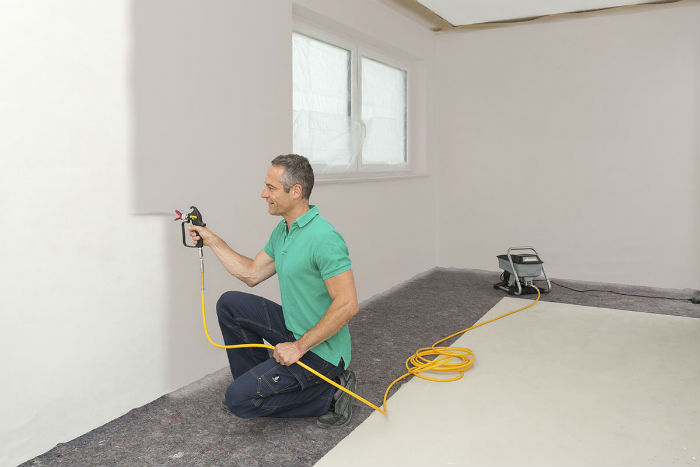
What is an Airless Paint Sprayer, and What is it Best For?
An airless paint sprayer also relies on high pressure to eject paint onto a surface at high speed It uses high pressure to atomize the paint into a fine mist of tiny droplets.
An airless sprayer uses a piston to pressurize the paint and a motorized hydraulic pump to push the paint through the nozzle and tip onto the painting surface.
The high temperature of the ejected paint makes drying time shorter, which shortens the time you take between coats.
One significant advantage of airless sprayers is that they can easily spray thick materials without clogging due to the high pressure. You’ll also be spraying faster because they eject misty paint at high speeds.
An airless sprayer is a better choice for professional and pro painters who need to spray large surfaces more often. The high pressure, high speed, and faster drying time make it easy to paint larger surfaces like fences, walls, and tanks with an airless sprayer.
Relevant Characteristics Between Air and Airless Paint Sprayers
Airless and air paint sprayers have similarities and differences you should consider keenly before making a purchase. Let’s consider some significant characteristics between the two types below.
Air vs. Airless Paint Sprayer
Compare by tapping or clicking below!

Finish Quality
Air Paint Sprayer
Moderate quality
Airless Paint Sprayer
High-quality finishes
Price Point
Air Paint Sprayer
Low – under $50 – about $300
Airless Paint Sprayer
$50 – $1,000
Coverage
Air Paint Sprayer
Moderate, smaller surfaces
Airless Paint Sprayer
High, large surfaces
Transfer Rate
Air Paint Sprayer
Up to 90% of input
Airless Paint Sprayer
Low – 40 to 50% of input
Pressure
Air Paint Sprayer
Low – about 10 psi, depends on attached air compressor
Airless Paint Sprayer
High – 1500 to 3000 psi
Control
Air Paint Sprayer
Easy to control
Airless Paint Sprayer
Challenging to control
Portability
Air Paint Sprayer
High without attached air compressor
Airless Paint Sprayer
High for carted models
Cleanup
Air Paint Sprayer
Easy to clean
Airless Paint Sprayer
Harder to clean
Cost and Maintenance
Air Paint Sprayer
Cheap to maintain
Airless Paint Sprayer
High initial cost
Expensive and challenging to maintain
Similarities and Differences
In this section, we’ll discuss in detail some of the differences and similarities between air sprayers and airless sprayers.
Air and Airless Paint Sprayer Differences
Since their working concepts are different, there are differences between airless and air sprayers. The major differences are discussed below:
Price Point
Air sprayers have a lower price point than their airless counterparts. An air sprayer will cost under $50 for simple models to about $300 for complex models with better features.
An airless sprayer will set you back between $50 for a simple handheld model and $1,000 for a high-end model with superior features such as smart control, pressure adjustability, and better rust resistance.
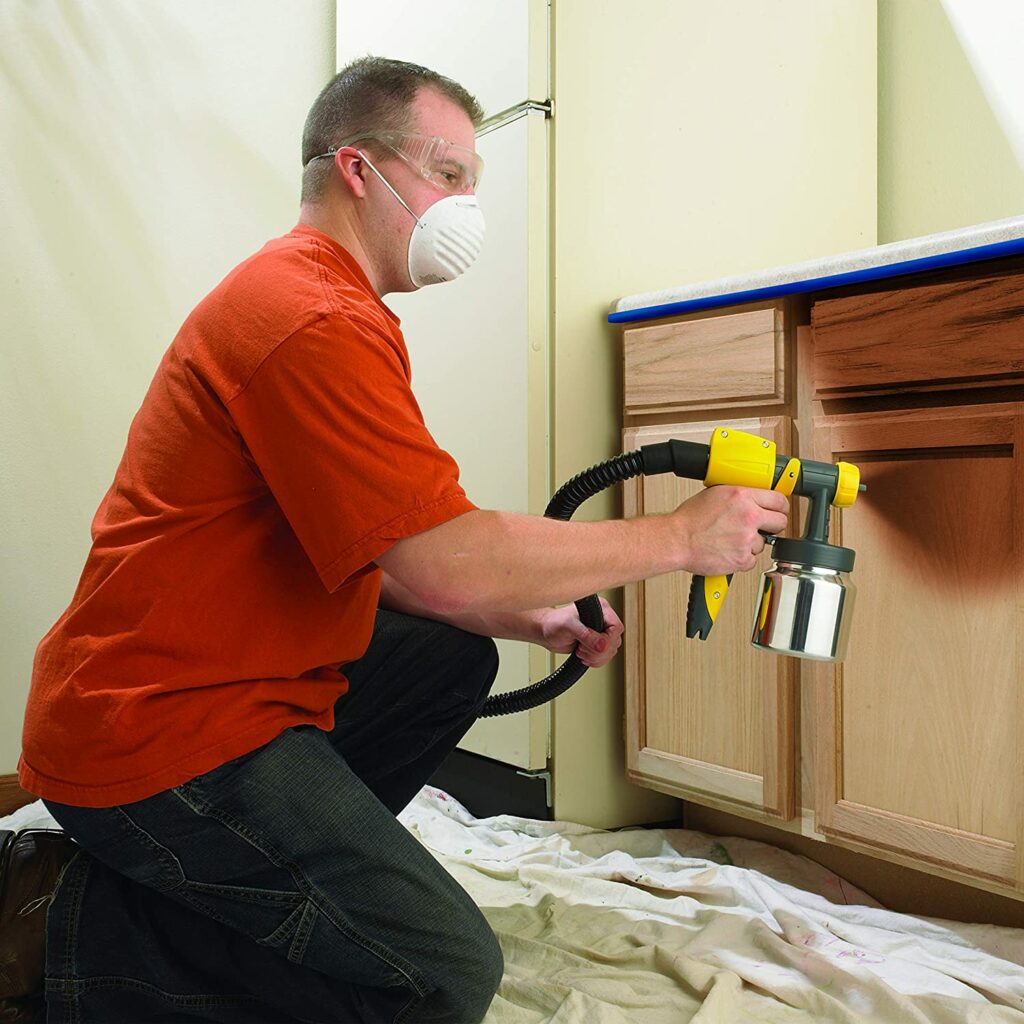
Coverage
An airless sprayer will cover more space within a short time because of the high pressure and high-speed painting process, making it ideal for large painting projects.
On the other hand, air sprayers have a slower output rate because of the low pressure and cover less space in the same time as an airless model.
Pressure
Airless sprayers eject paint at a higher pressure than air sprayers. Depending on the model and motor power, an airless sprayer can achieve between 1500 psi to 3000 psi (pounds per square inch).
An air sprayer can only achieve as much pressure as the air compressor you connect it with, usually about 10 psi.
Transfer Rate
The high pressure of airless sprayers makes them more wasteful than air models. On average, airless sprayers have a 40 to 50 percent transfer rate, while most air sprayers transfer up to 90 percent of spray material on the intended surface.
Cleanup
It’s easier to clean an air sprayer because it has a small paint container. Handheld models are also small and easy to clean.
Since most airless sprayers use a bucket to hold the paint, they are harder to clean. Painting thicker materials also make cleaning an airless model harder. However, some airless sprayers have an adapter for connecting a garden hose to make cleaning easier.
Cost and Maintenance
Airless sprayers have a high initial cost and are harder and more expensive to maintain, given that they are not easy to clean. They also have more components, such as the motor, which are prone to damage when overworked. These can be costly to repair or replace.
An air sprayer may have a low initial cost, but unless you already have an air compressor or a turbine system, you’ll have to bleed your wallet some more. However, they have fewer components and are easier to maintain, especially when spraying thinner materials.
Air and Airless Paint Sprayer Similarities
Despite the many differences, air sprayers and airless sprayers share some similarities. Let’s take a quick look at what they have in common.

Finish Quality
An air sprayer will produce a poorer finish with uneven coats because it uses lower pressure for transferring materials, meaning that more material has more time to blend with air and form bubbles that lead to an uneven coat.
The high speed and pressure of airless sprayers make them produce more overspray and have less precision. But they produce a more refined finish because the paint leaves at high pressure and high speed and has less time to interact with cold air.
However, the finish quality will mostly depend on how good you are at using either sprayer. A beginner using an airless sprayer won’t necessarily produce a lousy finish if they can control the sprayer well.
Similarly, a professional using an air sprayer won’t necessarily achieve a fine finish, especially if they have been used to using the high-pressure airless sprayers and now find themselves rushing with an air model.
Control
Ideally, it’s easier to control an air sprayer than an airless model. The low pressure and smaller size of an air sprayer mean it’s easier to hold in your hand and control. An airless sprayer is harder to control because of the high pressure.
However, the level of control you can achieve with either model can be relative and may be similar for one person or another. If you have moderately weighted hands, you can control both models with much ease. It also depends on how much you practice using each model.
Portability and Reach
Most air models are simple and small, with a good majority being handheld devices. However, you’ll have to connect them to a turbine system or an air compressor, which now limits their portability. With a good hose network, you can go places with an air sprayer.
Airless sprayers may be bigger and bulkier, but this doesn’t limit their potability because some come with a handy wheeled cart. Furthermore, most models come with long hoses suitable for easy movement and more reach.
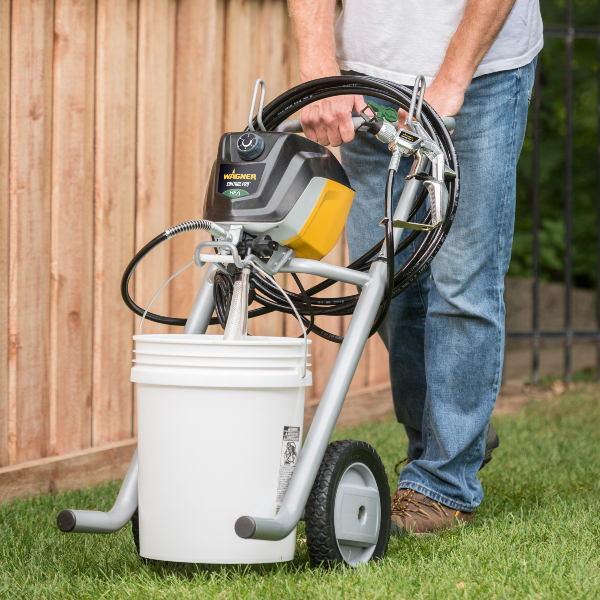
What About an HVLP Paint Sprayer?
An HVLP paint sprayer is an excellent substitute for an airless sprayer and other types of air sprayers, such as pneumatic and low volume-low pressure air sprayers. An HVLP sprayer is basically an air sprayer that relies on a turbine or compressor for paint atomization.
HVLP (High volume-Low pressure) sprayers are a better option because they are easy to use, have more forgiveness, cause less overspray, and have more pressure adjustability options.
HVLP sprayers also produce paint mist with finer particles and thus achieve even smoother and more uniform coats with up to 90 percent material transfer. They have higher painting precision because of the lower pressure output, making them suitable for beginners.
The high material transfer rate makes HVLP sprayers less wasteful than airless sprayers and thus more economical. Their prices range from under $50 for simple models to about $300 for high-end models with superior features.
Application Tips and Precautions for Air Sprayer
Air sprayers are generally safe to use, but some precautions and tips like the ones below will come in handy.
Thin, Thin, Thin
Since air sprayers do not produce too much pressure, thick spray materials or paints often cause clogging. To avoid this, it’s good to thin your materials or paints to a suitable viscosity level that is not too thin to achieve a good coat and not too thick to cause clogging.
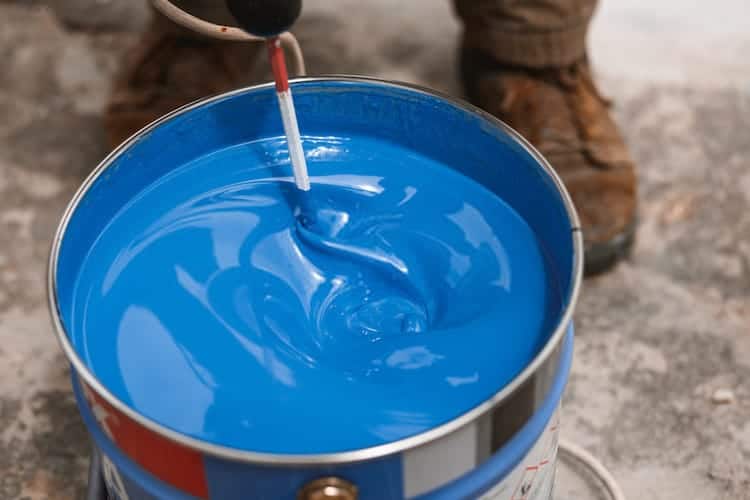
The way to strike a balance would be to use the recommendations of the paint and sprayer manufacturer, together with the right needles and nozzles, but more often, you’ll have to rely on trial and error.
You can also strain your materials as much as possible in addition to proper thinning.
Maintain a Specific Spray Pattern
Most air sprayers allow you to adjust between circular, vertical, and horizontal spray patterns. It’s a great thing to learn the three options, but you should stick to one specific pattern for each project for better results.
Changing the patterns mid-project may cause the surface to have different textures, which are remarkably more visible when looking at the surface from different positions or angles. It would make you look like an amateur painter.
Application Tips and Precautions for Airless Sprayer
Below are some handy tips and precautions you should consider when working with an airless paint sprayer.
Practice First, Please!
If you are just getting started with airless sprayers, it’s advisable to practice painting first on a separate surface like waste plywood before spraying the intended surface.
Good practice will help you learn how to handle the high pressure and control the sprayer for a consistent finish with less overspray.
Protect Yourself Well
An airless sprayer spews out misty paint at high pressure. Without proper protection, you’ll be inhaling a lot of harmful paint and painting yourself in the process. Plus, you can easily break your skin due to the high pressure if you accidentally make contact with the paint stream!
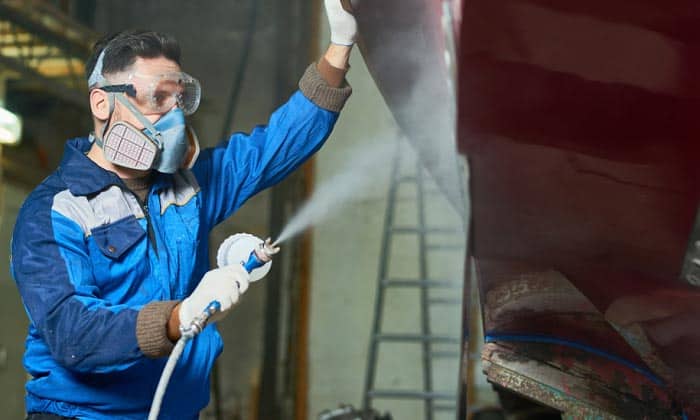
You should wear protective gear like heavy clothes, gloves, goggles, masks, and even earplugs to keep out the noise.
Mask Unintended Surfaces
With an airless sprayer, you run the risk of painting even surfaces you have no intention of painting. It’s advisable to mask off or cover any surrounding surfaces and objects you don’t want to spray paint, especially if you can’t move them away.
Bottom Line
In summary, the type of paint sprayer you choose will depend on your preference, budget, experience, and the size and specific needs of your project. As a beginner, you should choose the easier-to-use and more forgiving air sprayer.
If you are a professional painter handling large and frequent projects, especially at a commercial scale, you would be better off using an airless paint sprayer. However, you can also buy an air sprayer to use the two types to complement each other where you need more finesse.
People Also Ask
If you still have some issues you would like clarified, here’s a list of helpful questions and answers to them to help enhance your understanding of air and airless sprayers.
The term “pro” is relative, and anyone who knows their way well with air and airless sprayers can use either based on their needs and the size of the project at hand. An airless sprayer will suffice for a larger project, while an air sprayer is better for smaller projects.
However, most professionals with years of painting experience prefer using airless sprayers. As a beginner, you would be better off using an air sprayer because it is more forgiving.
Airless paint sprayers do not require an air compressor. Instead, they use a motorized hydraulic pump and a piston to pressurize paint through the nozzle and tip.
There’s no harm in using an airless sprayer indoors. However, you have to take various precautions to make the exercise safer for you and your property. First, you have to ensure your home is well ventilated.
Secondly, it’s better to use paints with little to no volatile organic compounds (VOCs) to reduce the chances of poisoning by breathing contaminated air.
Lastly, you must mask off or cover any surrounding items or surfaces you don’t want to get paint on since airless sprayers spread paint over a large area, even on unwanted surfaces. Also, ensure you don’t spray delicate surfaces like glass and thin wood or metals.
You can paint a house with an airless sprayer, especially if you are using it for large house surfaces like interior and exterior walls. The high painting speed will come in handy for such a large project, saving you time.
You will use more paint with an airless sprayer than with an air sprayer. Airless paint achieves only 40 to 50 percent material transfer onto the intended surface, so you need more paint.
The high-pressure output of the airless sprayer causes a lot of paint wastage through overspray and paint that flies and falls on unintended surfaces close to the one you are painting
